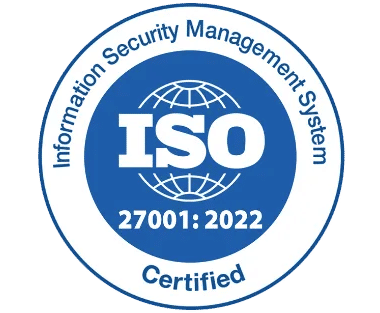Why Businesses Needs a Revenue Cycle Management Tool In 2025

Managing a business or service can often feel like balancing multiple responsibilities, with ensuring a consistent revenue flow being one of the most complex and critical aspects.
The good news is that these challenges do not have to persist. By implementing revenue cycle management tool, key tasks can be simplified with reliable billing software, and enabling real-time tracking, businesses can reduce errors and enhance process efficiency. This leads to faster payments, improved financial accuracy, and more time saved for your team, ultimately resulting in a smoother operation and a more reliable revenue cycle management tool.
By leveraging the right solutions, businesses can not only recover lost revenue but also create a foundation for sustainable growth and improved financial health. Let us see how.
What Is Revenue Cycle Management Tool
A Revenue Cycle Management tool is a software designed to manage and streamline the processes involved in handling bills, invoices, and subscriptions. It automates tasks like generating invoices, tracking payments, managing subscriptions, and ensuring timely billing. The goal is to improve accuracy, reduce manual errors, and optimize the billing cycle for efficient revenue collection and management.
Why Businesses Need a Revenue Cycle Management Tool
Revenue cycle management tool are game changers for businesses aiming to streamline their financial operations and boost overall success. These powerful solutions bring clarity, efficiency, and growth to the table, ensuring every step of the revenue process flows smoothly. Here are some benefits to look after.
1) Streamlined Billing Processes
A revenue cycle management tool automates the entire billing cycle, significantly reducing the need for manual intervention. By eliminating tedious, repetitive tasks such as generating invoices and tracking payments, businesses can ensure consistency and minimize errors. This automated billing system enables quicker, more accurate billing, ensuring that businesses stay on top of every transaction, from start to finish.
- Automatically generates accurate invoices without human error.
- Reduces the time spent on manual data entry and corrections.
- Ensures timely and consistent billing cycles for clients.
2) Enhanced Accuracy in Invoicing
Revenue cycle management tool provides a seamless solution for managing invoices by streamlining the entire process. With automated workflows and clear data organization, these tools eliminate manual entry and ensure that billing details are captured accurately every time. By maintaining accuracy and transparency in billing, businesses can foster trust, improve customer satisfaction, and significantly reduce the likelihood of disputes or confusion over charges. This solution creates a smoother, more efficient experience for both businesses and clients, promoting long-term success and smoother cash flow management.
- Reduces the risk of errors in invoicing and billing.
- Ensures that all invoice data is captured and organized accurately.
- Decreases customer disputes over incorrect charges.
3) Efficient Subscription Management
Managing recurring subscriptions can be a challenging and time-consuming task. An effective tool offers a comprehensive solution by automating processes such as subscription renewals, cancellations, and adjustments. This eliminates the need for manual tracking, ensuring that businesses can manage multiple subscriptions effortlessly. With an organized system in place, businesses can maintain a smooth flow of revenue without the added complexity of manual oversight.
- Automates subscription renewals, cancellations, and adjustments, reducing manual work.
- Provides a detailed and clear view of subscription history for each customer, making it easier to track changes and ensure accurate billing.
- Simplifies billing for recurring services, saving time, reducing errors, and improving overall efficiency.
4) Scalability and Growth
As businesses expand, managing increasing volumes of invoices, bills, and subscriptions manually becomes more difficult. An revenue cycle management tool is scalable, allowing businesses to handle growing workloads without sacrificing efficiency or accuracy. This enables businesses to scale smoothly as they grow, without worrying about the complexities of managing their revenue cycle.
- Easily adapts to higher transaction volumes as businesses grow.
- Reduces the need for additional resources or staff during expansion.
- Helps maintain consistency and efficiency even with more customers.
5) Enhanced Reporting and Analytics
An effective tool offers robust reporting and analytics capabilities that provide businesses with a comprehensive and detailed view of their financial operations. With the ability to track key performance metrics such as payment cycles, aging invoices, and customer payment trends, these tools empower businesses to make informed, data-driven decisions that directly contribute to operational efficiency and growth.
- Streamlines billing processes by providing actionable insights.
- Adapts reports to meet evolving business needs.
6) Integration With Existing System
Most Revenue cycle management tool are designed to integrate seamlessly with existing like MS 365 as Outlook, Teams, and Power BI. This integration plays a crucial role in ensuring that data remains consistent across all departments, whether it’s finance, customer service, or operations. By connecting different systems in real time, businesses can eliminate the need for redundant data entry and reduce the chances of human error, leading to more accurate financial tracking and reporting.
- Integration streamlines the flow of information across different departments, allowing teams to easily share updates and collaborate.
- Access to real-time data allows businesses to make decisions more quickly.
- By reducing manual tasks and automating repetitive processes, teams can focus on more important and productive activities.
Challenges Faced During the Process
Having explored the numerous benefits of implementing a robust revenue cycle management tool, it is essential to also acknowledge the challenges businesses face during this process. Let us take a closer look at these challenges.
1) Data Accuracy and Consistency
Maintaining data accuracy and consistency across multiple systems is a critical challenge in revenue cycles. Errors in customer information, billing codes, or service details can cause significant delays and complications in the revenue cycle.
For example, incorrect billing codes may result in claim denials, leading to delayed or reduced payments. Without a robust system in place to ensure data consistency, these issues can become recurring, further hindering revenue generation and causing frustration for both businesses and customers.
2) Regulatory Compliance
Adhering to constantly changing regulations is a fundamental challenge in revenue cycle management. Each industry has its own set of compliance requirements, including billing practices, financial reporting, and tax obligations.
Navigating through these regulations can be difficult, especially for businesses that operate in multiple regions or countries with differing laws. Failure to stay compliant can result in legal penalties, financial loss, and reputational damage.
Regular audits, staying updated on regulatory changes, and ongoing staff training are required to ensure compliance, which adds complexity to the process.
3) Inefficient Workflow
Inefficiencies in the workflow, whether due to manual processes or a lack of automation, are significant challenges in revenue cycle management. Bottlenecks, slow approval processes, and delayed collections can negatively impact cash flow.
Without proper automation, tasks such as invoicing, billing may be delayed, creating backlogs and increased administrative work. Businesses may struggle to streamline their processes, resulting in a slower, more costly revenue cycle.
4) Custom Bundle Complexity
Offering add ons, where customers choose products or services in a package, can provide flexibility but creates significant billing challenges. Each bundle may have unique pricing and discounts making it difficult to ensure that everything is billed accurately.
The manual tracking can lead to errors, such as incorrect discounts or uncharged items, resulting in loss in customer retention.
An effective tool must provide the flexibility to handle these complex pricing structures without causing billing issues, allowing businesses to efficiently manage custom bundles while maintaining pricing accuracy.
5) Subscription Management Complexity
Managing subscriptions can become complex, particularly when handling recurring billing models. Businesses with subscription-based services often struggle with tracking multiple subscription renewals and cancellations. Adjusting pricing or terms for existing customers adds another layer of complexity. Without automation, businesses risk errors such as missed renewals or incorrectly charged amounts, which can result in financial discrepancies and customer dissatisfaction.
Best Practices for Overcoming Challenges in the Process
Having explored the key challenges faced during the process, let us now look at the best practices that can help overcome these hurdles and streamline operations for greater efficiency.
1) Establish a Clear Invoicing Process
Establishing clear and consistent invoicing practices is key to reducing errors and delays in the payment process.
Automating the creation and sending of invoices can minimize human error and ensure that invoices are sent on time.
Additionally, providing clear payment terms and easy-to-understand invoices helps customers know exactly what they owe and when it’s due, reducing confusion and speeding up the payment cycle.
2) Foster Cross-Department Collaboration
Collaboration between departments is essential for a streamlined revenue cycle. Clear communication between finance, customer support, and sales ensures smoother coordination when it comes to billing and payment follow-ups.
Using centralized systems or platforms to track progress can eliminate silos and make data accessible to everyone in real-time, reducing errors and speeding up decision-making.
3) Utilize Automation for Repetitive Tasks
Automation plays a critical role in improving the efficiency of the revenue cycle. Automating tasks such as invoice generation, payment reminders, and follow-up emails can significantly reduce manual effort.
By freeing up staff time, automation allows them to focus on higher-value activities like resolving customer issues or optimizing financial strategies.
4) Track and Measure Key Metrics Continuously
In today’s fast-paced business environment, understanding the performance of your revenue cycle is vital to ensuring a smooth cash flow.
By regularly monitoring key performance indicators (KPIs), businesses can gain valuable insights into their financial operations and identify areas for improvement.
Keeping track of metrics will not only help prevent challenges but also guide decision-making to streamline the process.
5) Opting for the Best Tool
Choosing the right tool to manage your revenue cycle can drastically improve operational efficiency and accuracy. A robust tool streamlines the process by automating tasks such as invoice generation, payment tracking, and subscription management, reducing the risk of human error.
It ensures seamless integration across all departments and provides valuable real-time insights, allowing businesses to track performance and make informed decisions.
By opting for a tool that aligns with your business’s unique needs, you can enhance workflow, speed up collections, and improve overall financial management, leading to stronger revenue growth.
Things to Consider Before Implementing Revenue Cycle Management Tool
Before investing in revenue cycle management tool, it is important to carefully evaluate several key factors to ensure the tool is a good fit for your business. The right software can significantly improve the efficiency of your revenue processes, but it is essential to consider the following aspects.
1) Customization Capabilities
Every business has unique needs and processes. Ensure the software offers customization options to tailor it to your specific requirements. Whether it’s invoice management, billing cycles, or integrations, having the flexibility to adjust the system to fit your business model is crucial for optimizing your workflow.
2) User-Friendliness
The software should be easy to use for your team, with an intuitive interface and minimal training requirements. A user-friendly system allows your employees to quickly adopt it, reducing the learning curve and minimizing disruptions to your operations.
3) Scalability: Preparing for Future Growth
As your business grows, so do your needs. It’s important to choose software that can scale with you. A scalable revenue cycle management tool handles increasing transactions, users, and data without affecting performance. This flexibility allows your system to adapt as you expand, so you would not need a complete overhaul in the future.
With scalability, you can add more users, manage larger datasets, and adjust to evolving business models seamlessly. This ensures long-term value, as your investment remains relevant as your business grows, eliminating the need for frequent upgrades or system replacements.
In short, scalable software supports your business’s growth and ensures smooth operations no matter how large or complex your revenue cycle becomes.
4) Cost vs. Value: Making a Strategic Investment
When choosing revenue cycle management tool, it is essential to consider both the cost and the value it provides. While the price is important, the true value lies in the long-term benefits it brings to your business.
Before booking a demo consider that the offer a strong return on investment by improving efficiency, reducing manual errors, and automating tasks like invoicing and payment tracking.
5) Train Your Team
When implementing revenue cycle management tool, it is crucial to focus on providing your team with the proper training and resources. A software solution that offers comprehensive training materials, webinars, and user guides will help your team understand the system thoroughly, ensuring smooth adoption and effective use.
Training your team is key to maximizing the benefits of the software. Additionally, training should be an ongoing process, with regular updates and sessions to ensure the team stays up to date with new features and best practices.
Conclusion
As businesses grow and financial operations become more complex, implementing the right solutions will help you not only optimize your current processes but also pave the way for sustainable growth. Making sure your team is well-trained, adopting the best practices.
Ready to streamline your process. Book a demo with Revenue 365, Our demo specialist is happy to assist you.
Frequently Asked Questions
How does a Revenue Cycle Management tool improve billing processes?
It automates invoicing, tracks payments, and ensures timely billing, reducing manual work and the risk of errors.
Why is reporting and analytics important?
Reporting and analytics provide businesses with insights into key financial metrics, helping them make data-driven decisions to improve revenue cycle processes.
What are some common issues during implementation?
Common challenges include data consistency, workflow inefficiencies, complex pricing structures, and subscription management complexities.
What should I consider regarding the cost?
While considering the cost, ensure the tool provides value through automation, accuracy, and scalability, offering a strong return on investment.









_svxLrd-8yH.png)

_2VYSFUTN5m.png)

_JiluXJRGNl.svg)

_2djTKNocf.png)





_Rapo0hRMBy.png)

















